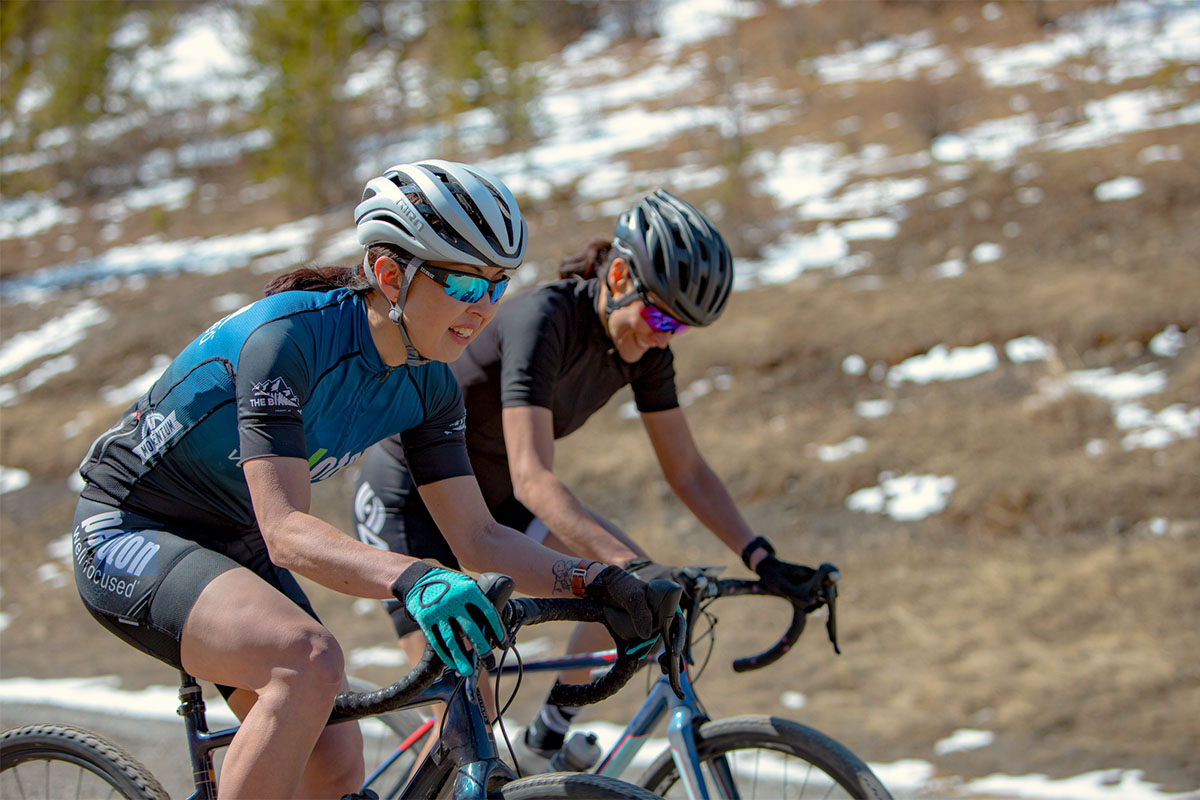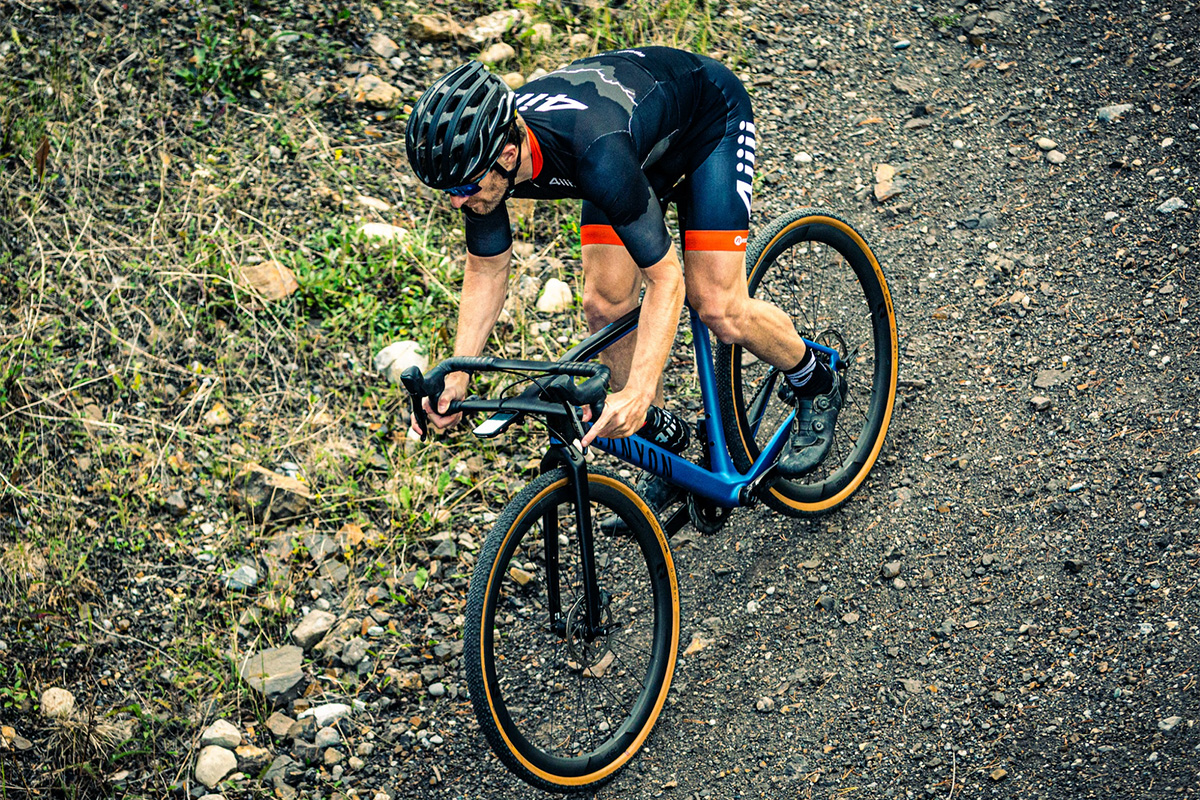The Gravel Grind: Training For Your Next Back-Road Adventure
Posted by Andrew Davidson on August 10, 2022
Whether you’re a seasoned veteran at cycling’s fastest growing discipline, or just testing the waters as an adventurous pedaller, gravel riding/racing is an amazing way to explore the path less traveled. With several years of combined race experience across some of the most challenging gravel events in western Canada, we’ve compiled some tips on how best to prepare for your next backroad pursuit.
As with any discipline in which you’re planning to pin a number on and tow the line, it’s helpful to understand the unique demands in advance, so you can arrive at your event as physically and mentally prepared as possible. While it’s tempting to think of gravel riding as just “road biking, but on gravel”, it quickly reveals itself as its own beast, as gravel events borrow aspects from across the cycling spectrum, with road, mountain and cyclo-cross skills all coming into play throughout a gravel race or fondo.
It’s like road riding/racing… in the sense that gravel events will rely heavily on your endurance as an athlete. With long climbs, power-consuming gravel segments and long hours in the saddle, a specific training plan will make your day on the backroads much more enjoyable. A power meter and heart rate monitor is a great way to develop an understanding of your personal aerobic capacities and training zones, which in turn will help you dose your energy output wisely over the course of the ride. Apart from using power data and heart rate to pace the day’s effort, tracking your caloric consumption / energy output can be extremely useful in refueling for the next day(s), when partaking in multi-day stage races like the TransRockies Gravel Royale. Depending on your comfort and skill level, gravel events can often involve a fair amount of time spent riding in a group. Taking advantage of the benefits of drafting, which is common in road riding, will save you lots of energy (up to 30%!). For those not already in the habit of drafting, seeing the difference in power output while taking a turn on the front of the group versus time spent sitting in the slipstream is a convincing bit of data that will likely inspire you to practice it with your trusted riding partners on future gravel get togethers.
It’s like mountain biking… in that it’s not all smooth sailing, the terrain and course conditions are going to test your bike handling throughout the day and challenge you to produce power efficiently while rumbling over rough surfaces and up climbs that are beyond your typical paved gradients. With this in mind, you can seek out climbs on your training rides that bring you to a crawl, with low cadence and high power output, to mimic the steeper sections you’ll inevitably encounter on race day. Not only do low cadence / high power intervals help build muscular strength and endurance, but they also lend themself to finding that somewhat elusive balance of gearing and tire choice for race day. If you’re brought to a standstill on gradients that aren’t overly steep, perhaps a bigger cassette or 2x chainring set-up would be of use (or maybe the legs just need more hills reps in them!?). If you find the rear wheel slipping beneath you when you attempt to stand on a loose climb, perhaps the tire has too slick of a tread pattern, the pressure is too high, or maybe it’s just a matter of staying seated on certain pitches to maintain traction. There’s no “right” answer, but the more you practice the more you’ll hone in on what works for your riding style and set-up.
It’s like cyclo-cross… as it’s born out of the same two-wheeled vision. The idea of taking road bikes, with their drop bars, narrower tires and lack of suspension onto unpaved and uncharted territory is what inspired the equally awesome discipline that is cyclo-cross. The recent rise in gravel riding’s popularity captures a lot of the same spirit as it redefines the places and distances one can cover on two wheels. Much like cyclo-cross the technical nature of gravel riding lies somewhere between road and mountain bike terrain, challenging enough that it’s worth spending time on some local singletrack and tamer xc trails to hone your handling and gaining an appreciation for the nuances of tire pressure. The once popular belief that firmer tires meant faster rolling has been swapped out for the new understanding that softer tires do in fact roll as quick or quicker, while also providing more comfort and traction. A good way to determine what works best for you is to find a repeatable off-road section of road or trail and repeat it with differing tire pressures (using an air pressure gauge), and noting what strikes the best balance of performance and comfort for you. It’s worth doing with your bike fully loaded as it would be for your gravel event, to simulate the same weight and feel.
Whether you’re signing up for a gravel event to compete or simply complete the challenge, it’s a great way to experience the love of riding with your fellow adventure seeking cyclists. With a bit of forethought and specific training you can ensure your day(s) in the saddle is a joyful slog, and not just a slog!
4iiii is a proud sponsor of the TransRockies Gravel Royale.




